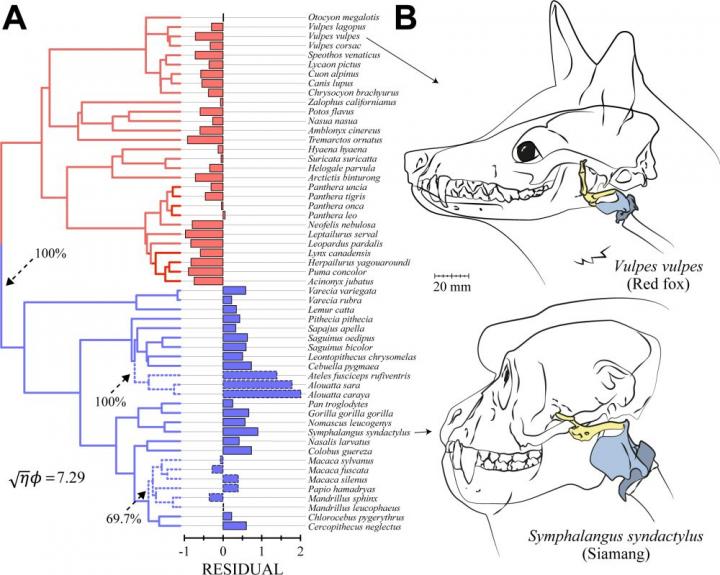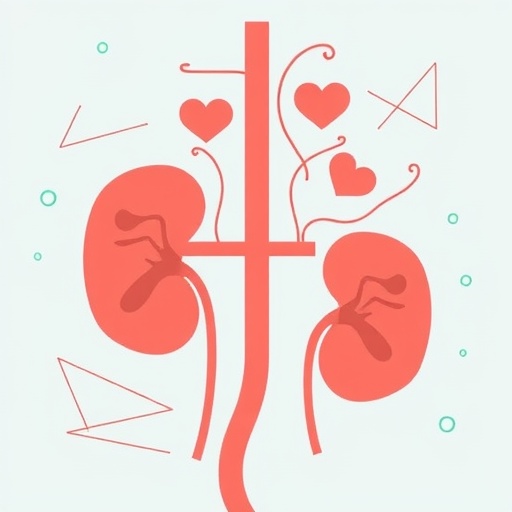
Credit: Bowling et al, 2020
The larynx is larger, more variable in size, and has undergone faster rates of evolution in primates than in carnivores, according to a study published August 11, 2020 in the open-access journal PLOS Biology by Daniel Bowling of Stanford University, W. Tecumseh Fitch of the University of Vienna, and colleagues.
The larynx is the main organ of vocal production, and a key target for evolutionary selection, particularly in those species that have a highly developed vocal communication systems. To shed light on the evolution of the larynx, Bowling and Fitch combined 3D computer models built from X-ray computed tomography scans with detailed digital measurements. They used these techniques to compare the larynx structure of 55 different mammalian species, representing a wide range of body sizes among primates and carnivores (from pygmy marmoset to gorilla and from dwarf mongoose to tiger). Carnivores were chosen as a comparable order of mammals with a similarly wide size range.
Using comparative methods known as phylogenetics, they showed that the larynx has evolved more rapidly in primates than in carnivores, resulting in a pattern of larger larynx size relative to body size, and greater variability in size. Acoustic vocalization data suggest that these differences are relevant to vocal communication. Moreover, larynx size is less tightly coupled to body size in primates than it is in carnivores, suggesting that the primate larynx has been freer to respond to fluctuations in evolutionary pressure. Taken together, the results imply fundamental differences between primates and carnivores in the balance of evolutionary forces that constrain larynx size, and highlight an evolutionary flexibility in primates that may help explain why we have developed complex and diverse uses of the vocal organ for communication.
###
Research Article
Peer reviewed; Experimental study; Animals
In your coverage please use these URLs to provide access to the freely available articles in PLOS Biology: https:/
Citation: Bowling DL, Dunn JC, Smaers JB, Garcia M, Sato A, Hantke G, et al. (2020) Rapid evolution of the primate larynx? PLoS Biol 18(8): e3000764. https:/
Funding: This work was funded in part by Austrian Science Fund (FWF) DK Grant “Cognition & Communication” (#W1262-B29). DLB was supported by a Lise Meitner grant from the FWF (#M1773-B24). JCD was supported by a grant from the Royal Society (RSGR1180340) and the Rhinology and Laryngology Research Fund. National Museums Scotland thanks the Negaunee Foundation for their generous support of a preparator who dissected the larynges use in the study. The funders had no role in study design, data collection and analysis, decision to publish, or preparation of the manuscript.
Competing Interests: The authors have declared that no competing interests exist.
Media Contact
Daniel L. Bowling
[email protected]
Related Journal Article
http://dx.




